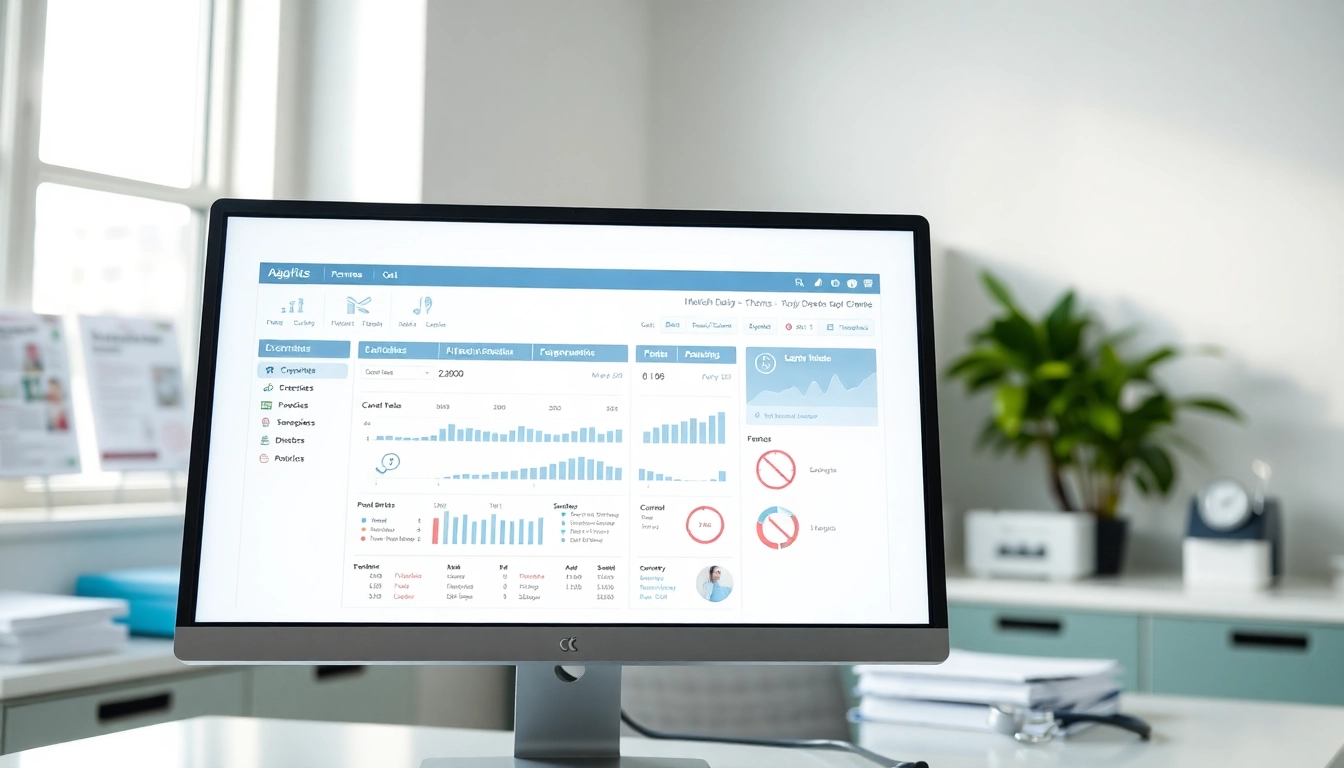Introduction to ePrescribing Software
The healthcare industry is rapidly evolving, with advancements in technology playing a crucial role in improving patient care and operational efficiency. Among these innovations, ePrescribing software has emerged as an essential tool for healthcare providers today. By allowing clinicians to send prescriptions electronically to pharmacies, ePrescribing offers numerous advantages, from reducing medication errors to streamlining the prescription process. With an increasing number of options available in the market, understanding the landscape of eprescribing software reviews can help practitioners make informed decisions that align with their practice’s specific needs.
What is ePrescribing?
ePrescribing, or electronic prescribing, is the digital generation and transmission of prescription orders, which allows healthcare providers to send prescriptions directly to a patient’s chosen pharmacy using a secure, electronic system. This method replaces the traditional paper-based approach, significantly enhancing the efficiency and accuracy of the prescribing process. With the integration of ePrescribing software, healthcare providers can access patient medication histories, check for potential drug interactions, and ensure that prescriptions are filled accurately and timely.
Benefits of Utilizing ePrescribing Software
The implementation of ePrescribing software offers several key benefits, including:
- Enhanced Patient Safety: By minimizing handwriting errors and ensuring clear communication between healthcare providers and pharmacies, ePrescribing reduces the likelihood of medication mistakes. Clinicians can swiftly access drug interaction databases, providing an additional layer of safety.
- Increased Efficiency: ePrescribing expedites the process of getting prescriptions to pharmacies, enabling quicker turnaround times for patients receiving their medications. This efficiency not only improves the patient experience but also enhances practice workflow.
- Documentation and Accountability: ePrescribing creates a digital trail of prescriptions that aids in auditing, compliance, and medication management. This documentation promotes accountability among healthcare providers and supports the quality of care.
- Reduced Costs: The electronic nature of ePrescribing can lead to lower operational costs related to paper, printing, and administrative overhead. Additionally, it can help identify more cost-effective medication alternatives, benefiting both practices and patients.
Understanding ePrescribing Regulations
The use of ePrescribing software is also governed by various regulations to ensure the security and confidentiality of patient information. Familiarity with both federal and state laws related to electronic prescriptions is essential for healthcare providers. Compliance with the Health Insurance Portability and Accountability Act (HIPAA) and the Drug Enforcement Administration (DEA) regulations regarding controlled substances is crucial. Understanding these legal frameworks helps practices implement ePrescribing software responsibly while safeguarding patient data.
Top Features of ePrescribing Software
User Experience and Interface
A crucial aspect of choosing ePrescribing software is its user experience (UX) and interface. The best solutions will offer intuitive design, allowing healthcare providers to navigate the platform with ease. Features such as customizable dashboards, shortcut keys for frequently prescribed medications, and streamlined workflows ensure that clinicians can focus on patient care rather than getting bogged down by complex how-to manuals.
Integration with Pharmacy Systems
Effective ePrescribing solutions seamlessly integrate with pharmacy systems and electronic health records (EHRs). This capability allows for smooth communication between healthcare providers and pharmacies, enhancing prescription accuracy and facilitating timely medication dispensing. Integration minimizes the need for duplicate data entry, which can reduce errors and save valuable time.
Data Security and Compliance
Data security should be a primary concern when evaluating ePrescribing software. Look for vendors that employ robust encryption protocols for both data in transit and data at rest. The software should comply with federal regulations regarding cybersecurity and data protection, ensuring that patient information remains confidential. Regular updates and maintenance are essential to stay ahead of potential threats and vulnerabilities.
How to Choose the Right ePrescribing Software
Assessing Your Practice’s Needs
Not all ePrescribing software is created equal; hence, assessing your specific practice needs is vital. Consider factors such as the size of your practice, the patient population you serve, and the existing systems you have in place. Determine what features you prioritize: Is it usability, affordability, integration capabilities, or comprehensive reporting features? Conduct stakeholder interviews with clinicians and administrative staff to gather input and ensure a comprehensive evaluation process.
Key Performance Indicators
Establishing key performance indicators (KPIs) will provide insight into the software’s performance and help you gauge whether it meets your practice’s objectives. KPIs might include metrics such as prescription turnaround time, refill rates, and the incidence of prescription errors. By regularly measuring these indicators, practices can assess the impact of the ePrescribing software and make adjustments as needed.
Comparative Analysis of ePrescribing Software Reviews
Reading eprescribing software reviews from different sources can provide invaluable insight into the experiences of other users. Look for reviews that highlight both strengths and weaknesses, and make note of recurring themes when discussing customer support, user interface, and system reliability. Analyzing this qualitative data can significantly aid in your decision-making process, allowing for more informed choices when selecting the best software for your practice.
Implementation Strategies for ePrescribing Software
Training Staff and Providers
Before implementation, ensure your staff receives comprehensive training on how to use the new ePrescribing software effectively. Consider scheduling dedicated training sessions where team members can practice with the software, ask questions, and familiarize themselves with its functionalities. Providing ongoing education and support will enhance adoption rates and mitigate potential frustrations during the transition period.
Testing and Quality Assurance
Prior to the full rollout of new ePrescribing software, conducting thorough testing is imperative. Simulate real-world scenarios to ensure that all features function correctly and that any integrations work seamlessly. Quality assurance checks can help identify problems before they affect patient care. Engage staff in beta testing and solicit feedback to make necessary adjustments before launch.
Continuous Support and Updates
The healthcare space is constantly changing, and so too should your ePrescribing software. Choose a vendor that offers continuous support and regular updates. This ongoing partnership ensures that your software remains compliant with regulatory changes and adapts to new technologies as they arise. Establish a feedback loop with your provider to address any concerns or necessary adaptations over time.
Evaluating ePrescribing Software Reviews
Understanding User Feedback
When analyzing ePrescribing software reviews, it is crucial to take a balanced view of user feedback. Look for reviews that include a diverse range of experiences—both positive and negative. Consider the context of the feedback given, such as whether the reviewer is a small practice or a large healthcare organization. This insight can provide perspective on how well the software meets the needs of different practice settings.
Case Studies of Successful Implementations
Reading case studies from practices that have successfully implemented ePrescribing software can serve as valuable learning tools. These narratives often detail the challenges faced, strategies employed for a successful transition, and the resulting improvements in efficiency and patient outcomes. By examining real-world examples, practices can glean insights that can inform their processes and strategies.
Future Trends in ePrescribing Technology
The future of ePrescribing technology is promising, with innovations on the horizon—including enhanced mobile capabilities, further integration with telehealth platforms, and advanced data analytics features. Additionally, the evolution of artificial intelligence and machine learning is expected to play a role in personalizing medication therapies and improving predictive analytics surrounding patient medication adherence. Staying updated on these trends can help practices leverage new technologies to enhance their ePrescribing efforts over time.



